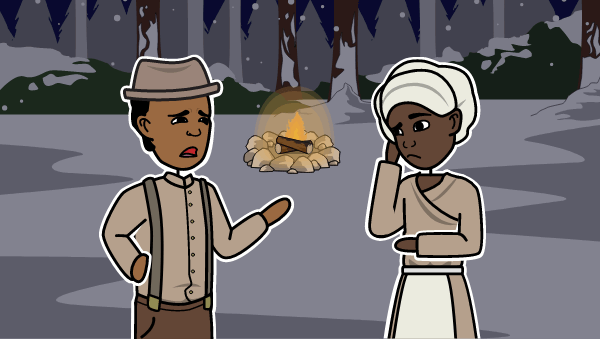
What’s more, the existing literature sometimes seems to obscure the real story still further. For a saga that looms so large in the national memory, it has received surprisingly little attention from scholars, at least until recently.

The century and a half since its heyday has only deepened the mystery.

And increasingly, this movement operated not under cover of darkness but in broad daylight.į or most people today-as for most Americans in the 1840s and 1850s-the phrase Underground Railroad conjures images of trapdoors, flickering lanterns, and moonlit pathways through the woods. Rather, an organized network, vast and sinister, actively encouraged and abetted it. Worst of all, the exodus could no longer be blamed on scattered outbreaks of Drapetomania. How long before the entire fabric began to unravel? The Mason-Dixon Line had become slavery’s fraying hem.
Underground railroad story answerr free#
Although only a few thousand people, at most, escaped slavery each year-nearly all from states bordering the free North-their flight appeared to many Southern whites the harbinger of a larger catastrophe. The essays’ author, the distinguished New Orleans physician Samuel Adolphus Cartwright, described in precise anatomical terms the reasons for African Americans’ supposed laziness (“deficiency of red blood in the pulmonary and arterial systems”), love of dancing (“profuse distribution of nervous matter to the stomach, liver and genital organs”), and exceptional dislike of being whipped (“skin … as sensitive, when they are in perfect health, as that of children”).īut what drew readers’ particular attention was Cartwright’s discovery of a previously unknown medical condition that he called “Drapetomania, or the disease causing Negroes to run away.” (He derived the name from an ancient Greek term for a fugitive slave.) This affliction, he continued, had two effective cures: treating one’s slaves kindly but firmly, or, failing that, “whipping the devil out of them.”ĭrapetomania seemed on the verge of becoming a fatal contagion in the summer of 1851, when Cartwright’s articles appeared.

Underground railroad story answerr series#
A decade before the Civil War, the leading Southern periodical De Bow’s Review published a series titled Diseases and Peculiarities of the Negro Race-a much-needed study, the editors opined, given its “direct and practical bearing” upon 3 million people whose value as property totaled some $2 billion.


 0 kommentar(er)
0 kommentar(er)
